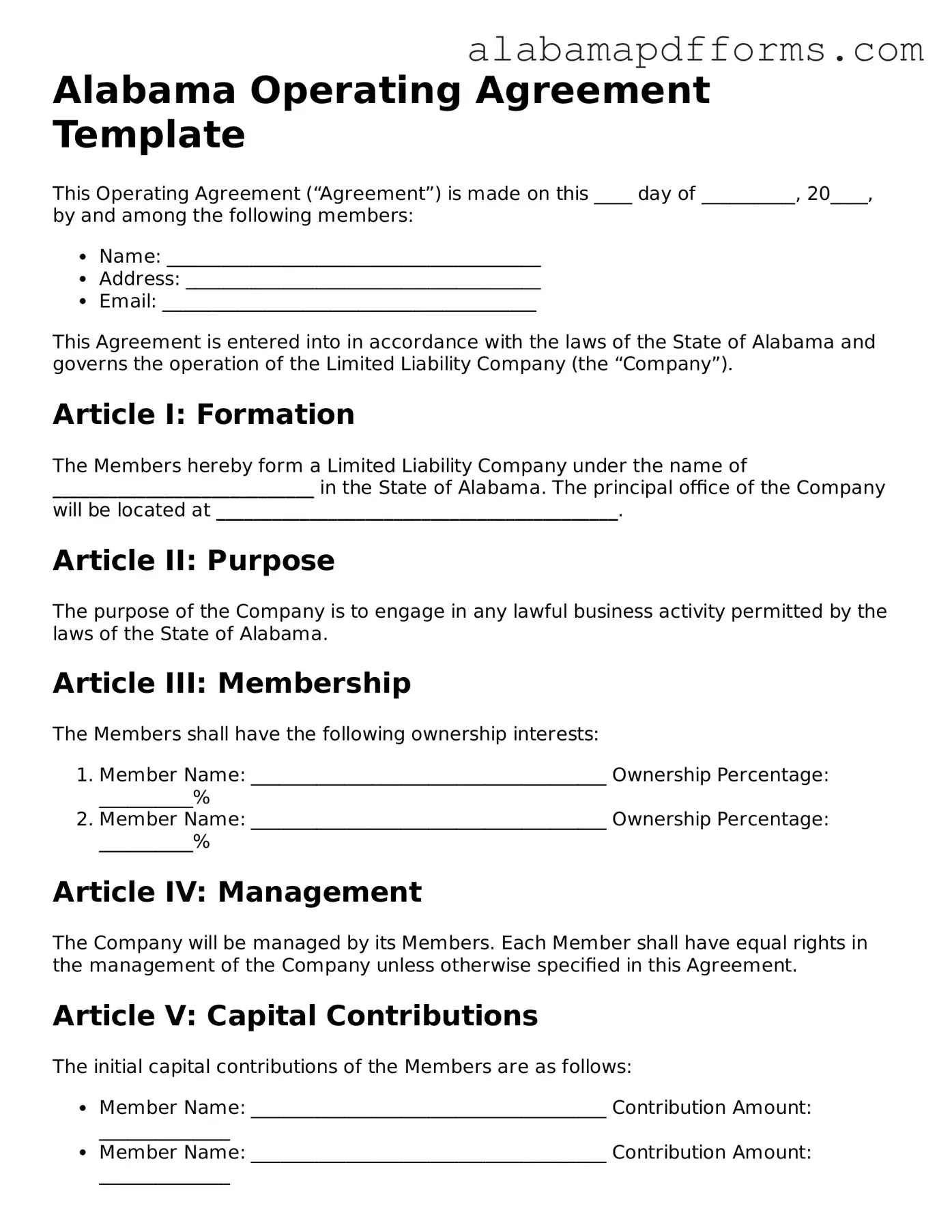Alabama Operating Agreement Template
This Operating Agreement (“Agreement”) is made on this ____ day of __________, 20____, by and among the following members:
- Name: ________________________________________
- Address: ______________________________________
- Email: ________________________________________
This Agreement is entered into in accordance with the laws of the State of Alabama and governs the operation of the Limited Liability Company (the “Company”).
Article I: Formation
The Members hereby form a Limited Liability Company under the name of ____________________________ in the State of Alabama. The principal office of the Company will be located at ___________________________________________.
Article II: Purpose
The purpose of the Company is to engage in any lawful business activity permitted by the laws of the State of Alabama.
Article III: Membership
The Members shall have the following ownership interests:
- Member Name: ______________________________________ Ownership Percentage: __________%
- Member Name: ______________________________________ Ownership Percentage: __________%
Article IV: Management
The Company will be managed by its Members. Each Member shall have equal rights in the management of the Company unless otherwise specified in this Agreement.
Article V: Capital Contributions
The initial capital contributions of the Members are as follows:
- Member Name: ______________________________________ Contribution Amount: ______________
- Member Name: ______________________________________ Contribution Amount: ______________
Article VI: Distributions
Profits and losses shall be allocated to the Members in accordance with their ownership percentages.
Article VII: Amendments
This Agreement may be amended only by a written agreement signed by all Members.
Article VIII: Miscellaneous
In the event of any disputes arising under this Agreement, the Members agree to resolve such disputes through mediation before pursuing any legal action.
IN WITNESS WHEREOF, the undersigned have executed this Operating Agreement as of the date first above written.
- Member Signature: ________________________________ Date: ____________
- Member Signature: ________________________________ Date: ____________
